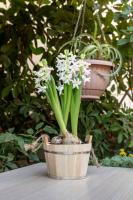How Far Apart Do Plum Trees Need to Be Planted?
Plum trees can be a beautiful addition to any garden or orchard, providing not only a source of fresh fruit, but also adding to the aesthetic value of the landscape. However, planting them too close together can cause issues with growth and health of the trees. In order to ensure proper growth and yield, it is important to consider the spacing requirements for plum trees.
Factors to Consider
The spacing requirements for plum trees can depend on several factors, including the variety of tree, the rootstock used, and the planting method. Some varieties of plum trees grow larger than others, and this can affect the spacing requirements. Rootstock also plays a role, as some rootstocks promote greater growth than others. Additionally, planting methods can vary, with some opting for a traditional row layout, while others use a more open, spaced-out planting.
Spacing Recommendations
Typically, it is recommended to space plum trees between 12-20 feet apart, depending on the variety and rootstock used. Dwarf varieties can be planted closer together, while larger, standard varieties require more space. The general rule of thumb is to plant the trees at least as far apart as their mature canopy width.
It is also important to consider the spacing between rows. Rows should be spaced at least 15-20 feet apart, to allow for proper air circulation and sunlight exposure. This can help prevent issues with overcrowding, which can lead to disease and hinder growth.
Benefits of Proper Spacing
Planting plum trees with proper spacing can provide several benefits, including healthier and stronger trees, increased fruit yield, and easier maintenance. When trees are spaced appropriately, their root systems have ample room to spread out, allowing them to more efficiently access water and nutrients in the soil. This can lead to stronger and healthier trees, with less issues with pests and disease.
Additionally, proper spacing can lead to increased fruit yield, as the trees are able to grow and develop without competing with neighboring trees. When trees are too close together, they may struggle to receive adequate sunlight and nutrients, resulting in smaller or fewer fruit. Planting trees with proper spacing can also make maintenance easier, as there is less crowding and potential for damage when pruning or harvesting.
Conclusion
Overall, when it comes to spacing plum trees, it is important to consider the variety, rootstock, and planting method. Spacing trees appropriately can lead to stronger and healthier trees, increased fruit yield, and easier maintenance. While it may be tempting to plant trees closer together to fit more in a small space, it is important to prioritize the health and well-being of the trees in order to ensure a successful harvest for years to come.

 how many times do yo...
how many times do yo... how many planted tre...
how many planted tre... how many pine trees ...
how many pine trees ... how many pecan trees...
how many pecan trees... how many plants comp...
how many plants comp... how many plants can ...
how many plants can ... how many plants and ...
how many plants and ... how many pepper plan...
how many pepper plan...































